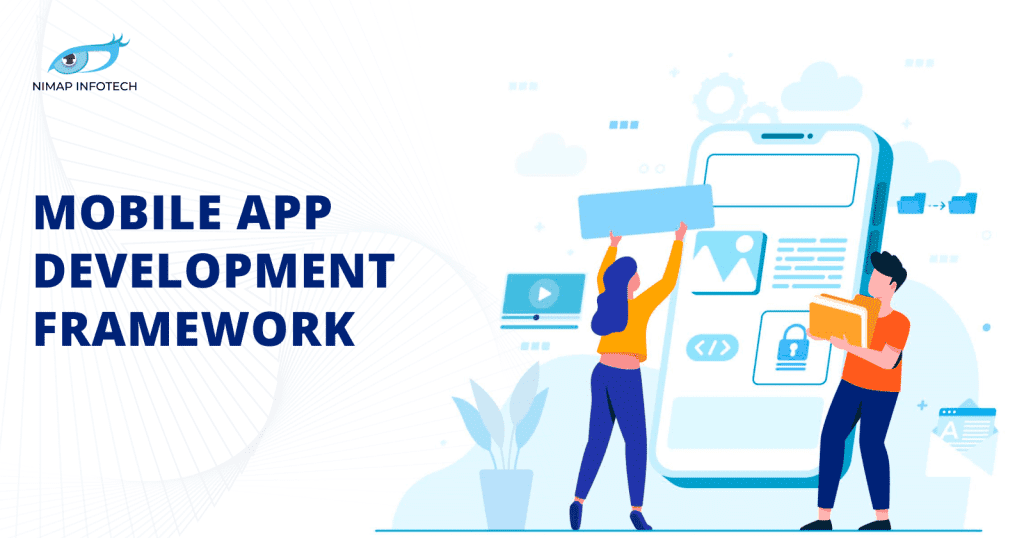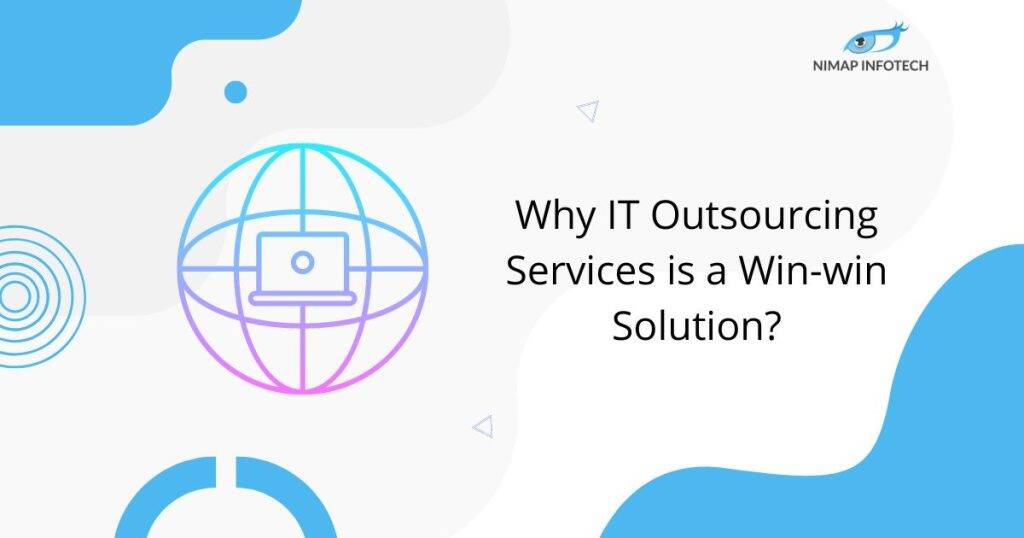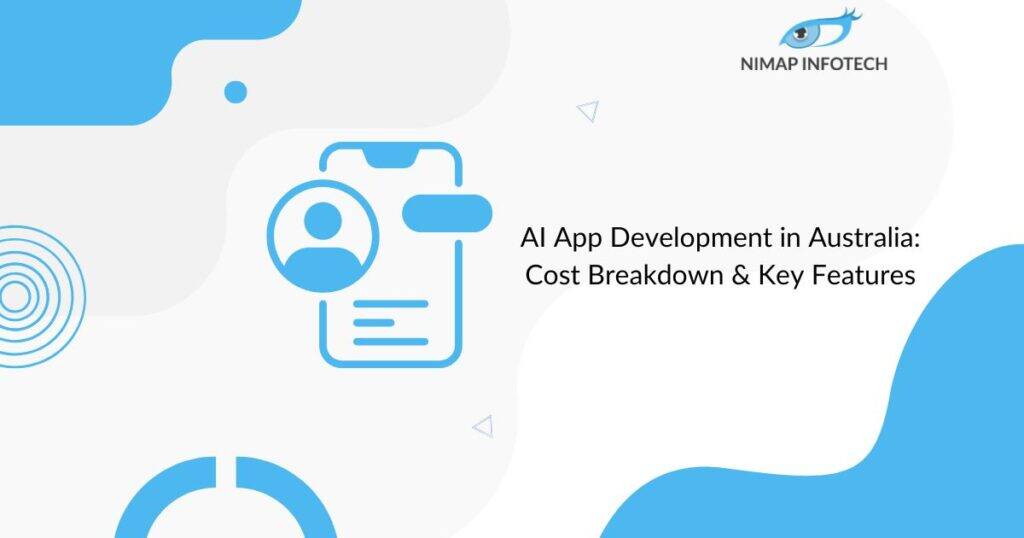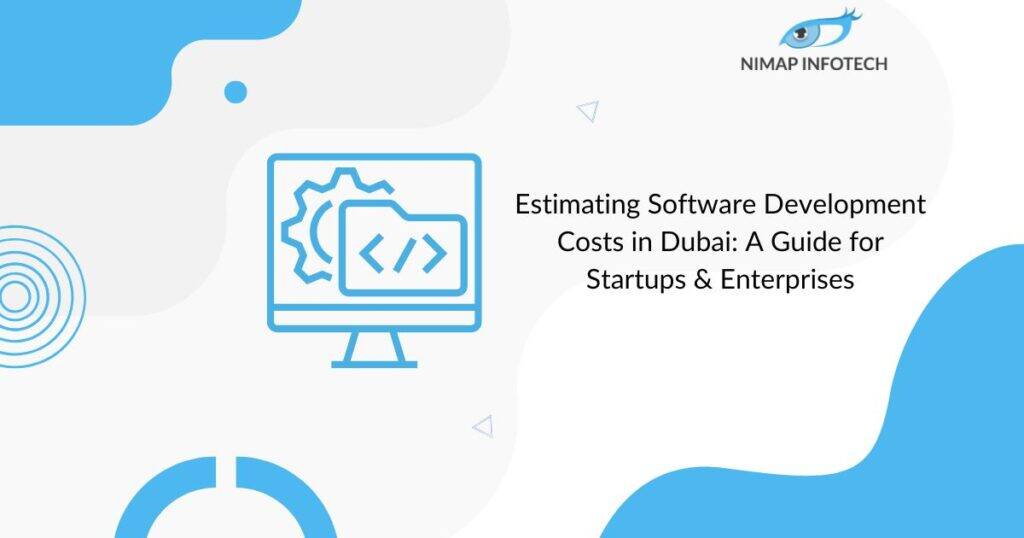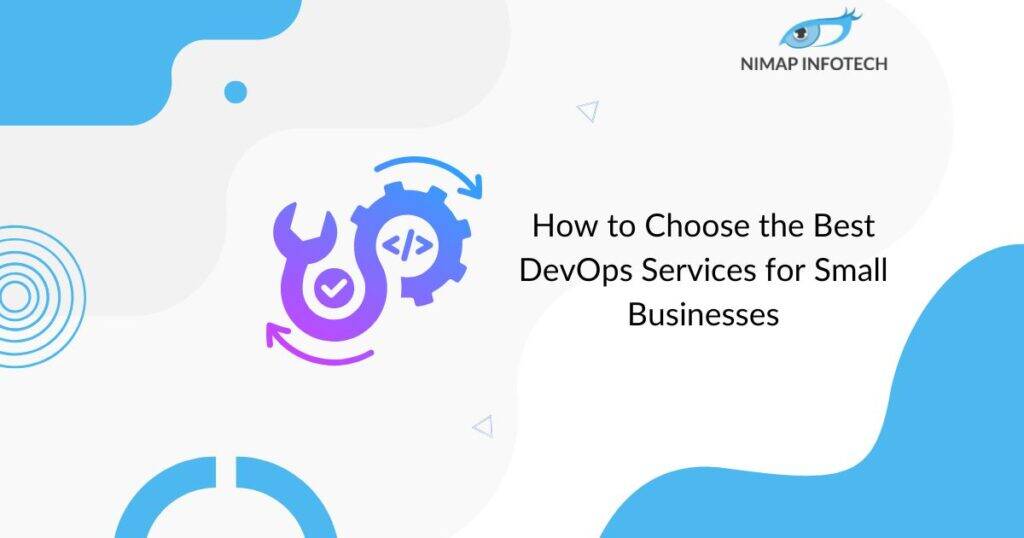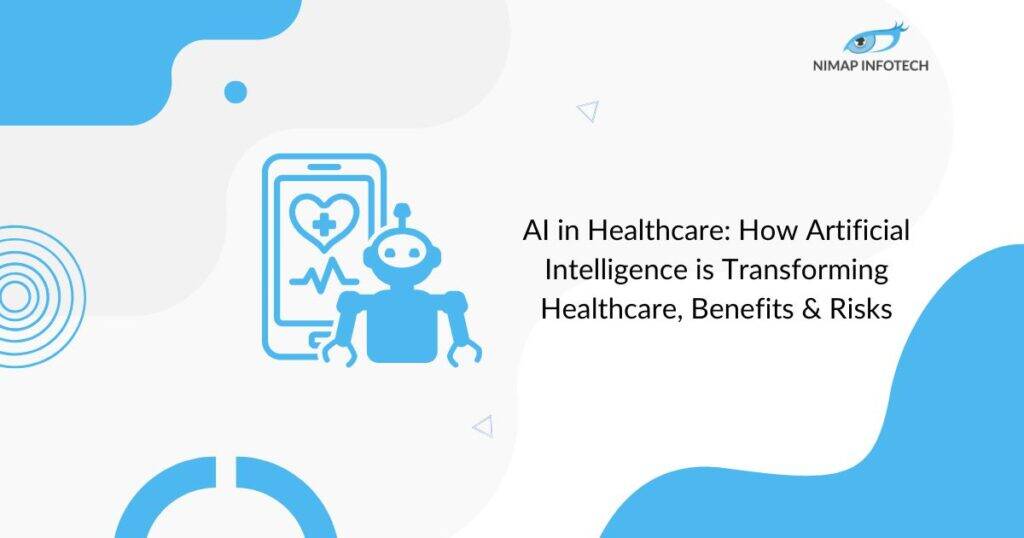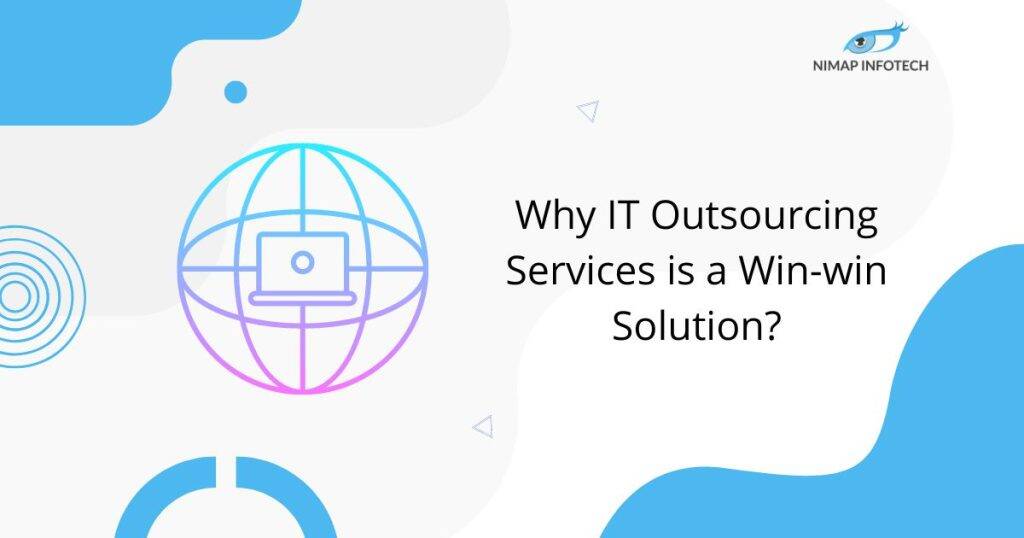Native apps provide an exceptional visual and performance experience. They are costly to establish and sustain. It’s challenging to engage customers with the variety of devices available. Mobile app development frameworks are used to make a web, hybrid, or cross-platform mobile app for companies at an affordable price. Throughout this blog, we’ll look at the 10 Frameworks for Mobile App Development that will dominate the market in 2023.
Table of Contents
ToggleWhat is a Mobile App Framework?
Mobile Apps are a highly effective method for expanding a company’s consumer base. There is never a shortage of unique app ideas. Everything worked in favour of application development companies. Developers use mobile app development frameworks to construct and improve their apps as templates or essential structures. They are templates or core frameworks that make their task easier.
Developers work within specific frameworks and templates. They are restricted in a way that prevents them from committing time-consuming programming errors. Which allows them to work faster and more efficiently. Frameworks for creating mobile apps include software, compilers, debugging tools, and programming interfaces.
To generate the application for various mobile devices. A developer creates the application’s source code and framework, utilizing multiple elements to create it. You would take a long time to build a house if you did it with your hands, you would probably make many mistakes, and the result might not be what you wanted. You would employ experts to prevent errors and utilize machinery to expedite your work.
Just as a framework can accelerate app development, it is important to note that all frameworks undergo continuous testing and refinement, guided by the expertise of software developers and engineers. To ensure they keep your app development on track.
Types of Mobile App Frameworks –
Native Apps:
- These frameworks allow you to develop apps compatible with specific platforms. iOS and Android are being developed using “native” programming languages.
- Swift, Java, and Kotlin stand out as specialized programming languages for mobile platforms, each presenting distinct advantages in the realm of application development. Apps use device features like RAM, camera, GPS, etc.
- These gadgets are designed to enhance user experience across various platforms, functioning seamlessly on specific operating systems like Windows, iOS, and Android.
Web Apps:
- Online apps for web services, web APIs, and web servers may be created using these frameworks.
- Web applications are software stored and distributed via the Internet using a browser interface.
- Today’s popular web apps include email, online retail sales, auction sites, blogs, instant messaging apps, and other web apps.
Hybrid Apps:
- In today’s development world, hybrid (aka cross-platform) apps are very popular.
- These frameworks enable developers to create applications that run smoothly on both iOS and Android platforms.
- A hybrid is an application launched on a smartphone similar to any other app.
- The difference between hybrids and native apps is that hybrids combine features from both types.
The frameworks described above are often used to construct these apps.
- Native Applications Framework
- Hybrid Applications Framework
Regarding aesthetics and functionality, native apps are of the highest quality. Yet, native app development is costlier. Financial constraints may hinder top customer engagement on diverse platforms.
Mobile App Development Frameworks in 2023 –
Here’s a quick look at the frameworks themselves. Our focus has shifted to hybrid app frameworks like Flutter and React Native, which are our current favourites.
1. Flutter
- A framework developed by Google called Flutter allows you to build native Android and iOS apps in one codebase for Mobile, web, and desktop.
- This framework is free and open source, and it allows developers to build stunning mobile apps easily.
- Flutter Developers can create visually appealing mobile apps with their full framework with widgets, rendering engines, testing APIs, and integration features.
Key features of Flutter include:
- A mobile-first, heavily optimized 2D rendering engine that offers excellent text support. A modern React-based framework.
- Rich widgets implemented in Material Design and iOS and APIs for unit & integration tests. Interop and plugin APIs that connect to the system, third-party SDKs, and Headless Test Runner for Windows.
- Dart DevTools for app testing, debugging and benchmarking.
- Command-line utilities for developing, constructing, testing, & compiling your applications.
- The website offers a visually appealing and high-quality user experience and interface.
- Performance at the level of a native
2. React Native
- It is a cross-platform, accessible, and user-friendly application development framework built and supported by Facebook that has rapidly gained popularity among programmers.
- React Native enables developers to create mobile apps for Android and iOS. React Native apps from major companies like Tesla, Airbnb, Skype, and Amazon Prime are considered exemplary.
- It allows for creating platform-specific versions of multiple features, allowing for easy use of a single codebase across all platforms.
- The operating code is nearly identical to Respond, except React Native does not use the Virtual DOM to manipulate the DOM.
- In a background process, it diagnoses JavaScript written by the creators on the end device directly and communicates with it through serialized data over an asynchronous and batched bridge with the native platform.
- React Native is a JavaScript-based system that creates native views with a CSS-like appearance, operating independently from traditional HTML or CSS dependencies.
- The syntax of this text is identical to CSS, as it does not utilize HTML or CSS.
Developers using React Native create precise native code for their designated platform, including Microsoft’s React Native for Windows and macOS. These languages and platforms include Java or Kotlin for Android and C++ or WinRT or C# for Windows 10.
React Native’s major appeal is that it enables quicker development and implementation. The tool can reuse elements, interact with third-party extensions, and create GUI components for front-end apps.
Features of React Native:
- Cross-platform Development
- Native Performance
- Strong Integration with React
- Hot Reloading
- Community Support
- Access to Native APIs
- Large Library of Components
- Reusable Components
3. JQuery
- JQuery Mobile is a framework for creating webpages that operate well on smartphones, tablets, and desktop computers.
- The website, built on HTML5, is user-friendly and compatible with touch displays and can be customized using JQuery’s theming framework.
- JQuery Mobile is a lightweight, easy-to-use API with a robust API.
- JQuery Mobile, based on JQuery Core, is designed for those who are already familiar with JQuery.
Key features of JQuery include:
- The compatibility of PI is extensive and straightforward, making it easily understandable for users.
- The product is compatible with PhoneGap and other mobile application development frameworks.
- The space available is restricted.
4. Swiftic
- Swiftic is a mobile app platform that aims to make it easy for anyone to create customized applications for their business.
- The tool simplifies app development by facilitating the seamless integration of pre-existing web content, eliminating the need to start from scratch.
- It is a highly flexible mobile app development framework that offers a seamless user experience and straightforward strategies.
- Push notifications, social media feeds, application ads, and other tech advancements are integrated into the framework.
- It is one of the most basic mobile app development tools, allowing you to build, launch, and expand your app from a single control panel.
Key features of Swiftic include:
- An intriguing push notification
- Feeds from Social and Media Platforms
- Assistance with App Publication
- Third-party integration for advanced analytics
5. NativeScript
- NativeScript is a cutting-edge open-source framework designed for building high-performance mobile applications.
- It is ideal for developers who prefer to use Typescript, Angular, JavaScript, CSS, and Vue.js in their development process.
- With its focus on boosting app load times and reducing development time, NativeScript is a popular choice for businesses.
- One of the key advantages of this framework is that it provides comprehensive backend and business support, making it easy for businesses to create cross-platform applications.
- The APIs offered by NativeScript are similar to those found in Xcode and Android Studio, allowing developers to create Android and iOS apps using a single source code.
Key features of NativeScript include:
- A native user interface without the use of WebViews
- Full access to Android and iOS APIs
- Reusable code elements
- Backend support
- Cross-platform application development.
Read More: Mastering Mobile App Development: Tips for High-Performance
6. Ionic
- Ionic is a complete open-source framework that allows you to create high-quality cross-platform mobile apps with a single codebase.
- Developers may use this framework to develop apps for major platforms like iOS, Windows, and Android.
- The Ionic framework offers a range of user-interface components, including filters, forms, views, and navigation menus, which can be utilized in-app designs.
- Ionic is capable of creating Progressive Web Apps (PWAs) and hybrid apps.
Ionic’s primary features include the following:
- Documentation is extensive.
- The mobile software development kit is an open-source tool.
- A CLI (Command Line Interface) for development and testing
- Native cross-platform bridge
- Integrations with well-known frameworks like React, Angular, and Vue Intuitive user interface components
7. Xamarin
- Microsoft’s Xamarin is a mobile app development framework. This tool allows developers to create apps for multiple operating systems like Android and iOS using a single codebase.
- It is built on .Net and has widespread developer support, including tools, libraries, and programming languages.
- Xamarin includes a large contributor community, a customizable backend, diagnostic tools and more.
- This solution is highly effective for creating native apps for various platforms.
Key features of Xamarin include:
- Rapid Progress
- The look and feel of a native app
- Compatibility with a wide range of devices
8. Apache Cordova
- Apache Cordova, also known as PhoneGap, is a simple framework specifically designed for creating mobile apps.
- It allows developers to build cross-platform apps with HTML5, CSS3, and JavaScript.
- The apps run under platform-specific wrappers and rely on API bindings that adhere to industry standards to access the device’s sensors, data, and network status.
The following are some of the main characteristics of Apache Cordova:
- One of Apache Cordova’s primary strengths is its ability to deploy prototypes swiftly.
- The framework combines native app components with a WebView to provide developers access to device-level APIs from a single source of code.
- Users get a native-like experience using the Command Line Interface (CLI) and plugins that interface with smartphone hardware functions like GPS and cameras.
- Apache Cordova is a platform that offers a third-party application administration tool.
9. Onsen UI
- Onsen UI is a mobile app development tool. By harnessing the power of JavaScript, HTML, and CSS, this technology crafts visually appealing applications that closely emulate the native experiences of platforms like iOS and Android.
- It contains numerous pre-made UI elements, including tabs, navigation, and lists, and supports well-known frameworks like Angular and React.
- Onsen UI, a top-rated app development tool, provides substantial time and cost savings with its user-friendly interface and robust features.
Key features of Onsen UI include:
- Simple to use and understand
- Setup takes no time at all.
- The development process is designed to balance cost-effectiveness and efficiency with timely delivery.
10. Framework7
- Framework7 crafts native-like apps across mobile, desktop, and online platforms, defining itself as a versatile development framework.
- It’s simple to use and allows you to create prototypes rapidly.
- It includes a slew of ready-to-use UI components and widgets like popups, tabs, and grids.
- Framework7 is easy to learn if you are familiar with jQuery.
- Integrating with popular frameworks like React and Angular, this framework enhances flexibility and compatibility for developers.
- It includes a large community of templates, icons, and plugins to assist you in creating your app.
Key features of Framework7 include:
- Framework7 is a tool for creating native-looking Mobile, desktop, and online applications.
- It’s simple to use and has many pre-built UI components to help you develop your project quickly.
- The tool, based on jQuery, is compatible with popular frameworks like Angular and React.
- It features a robust community offering templates, icons, and plugins to assist you in developing your app.
Also Read: Mobile App Development Team: (Structure, Hiring Models, Cost)
Summing It Up
We’ve tried picking the best mobile app development frameworks for you to consider for your future app projects. These frameworks are continually developing, and new possibilities will emerge in the next years. We have discussed the most common solutions for you to consider. If you have a great app concept, it is time to make it a reality. You won’t be sorry if you take the appropriate strategy to make your firm more mobile.
We are here to assist you with your mobile app development requirements if you want assistance. Feel free to reach out to us for more information.
Author
-

With 14+ years in IT and entrepreneurship, I co-founded Nimap Infotech, a digital transformation company that has delivered 1200+ projects and built a team of 400+ engineers. I’ve also led mobile development teams at Accenture India and IBM Apple Garage and developed a network of 7k+ iOS and Android developers. As an Angel Investor, tech advisor, and mentor, I actively engage with the startup ecosystem.
View all posts

